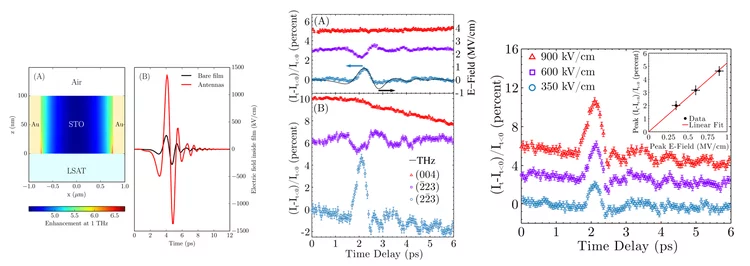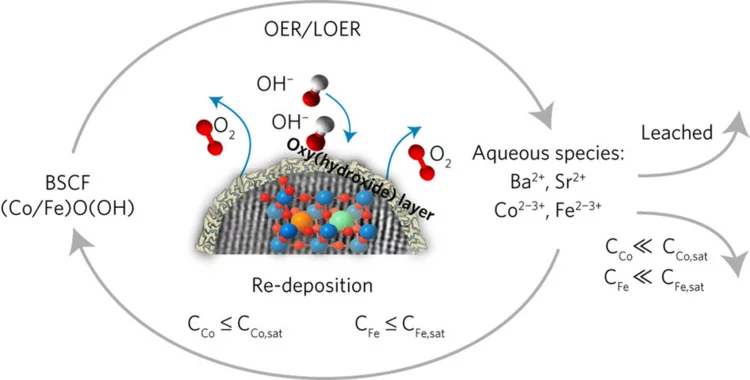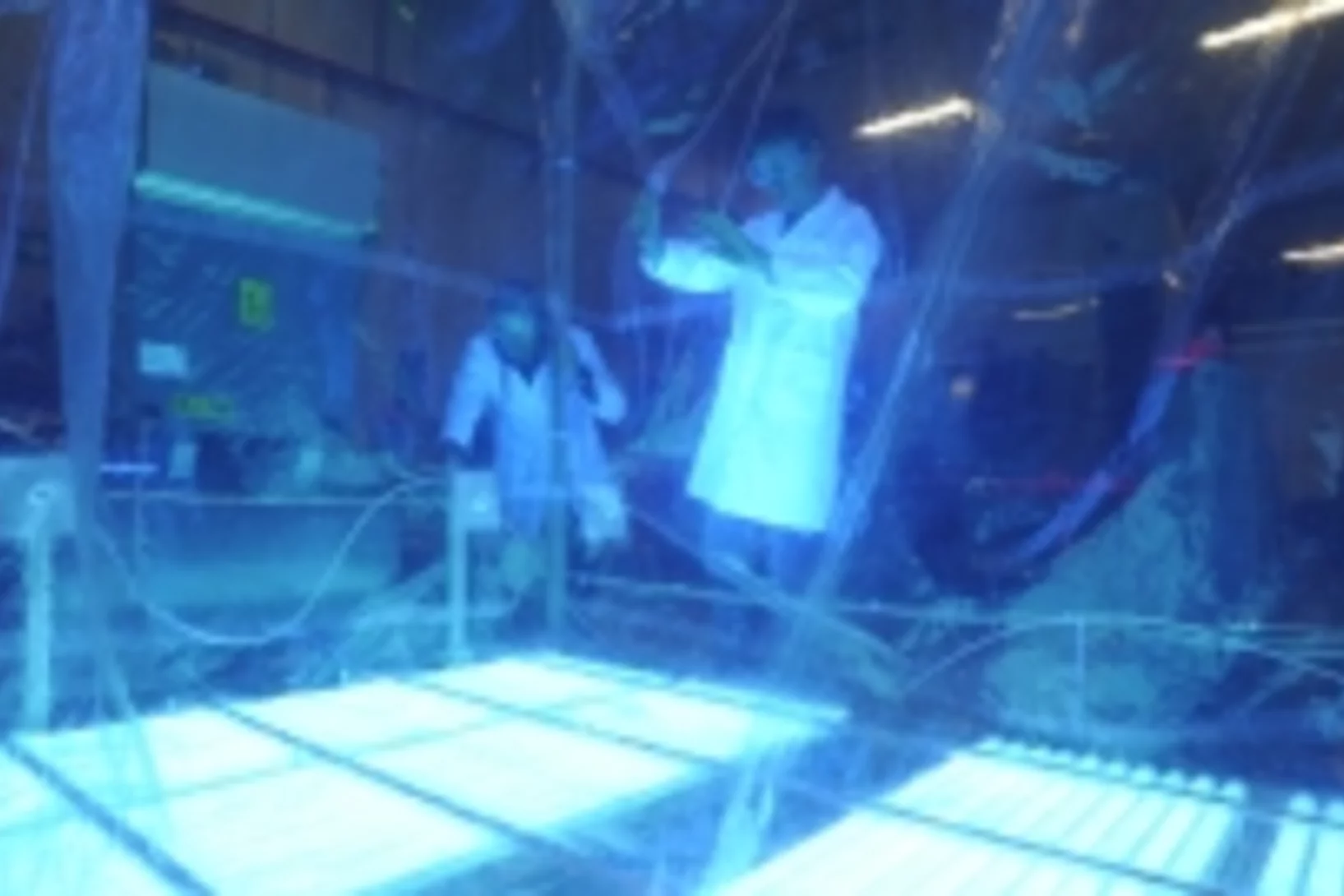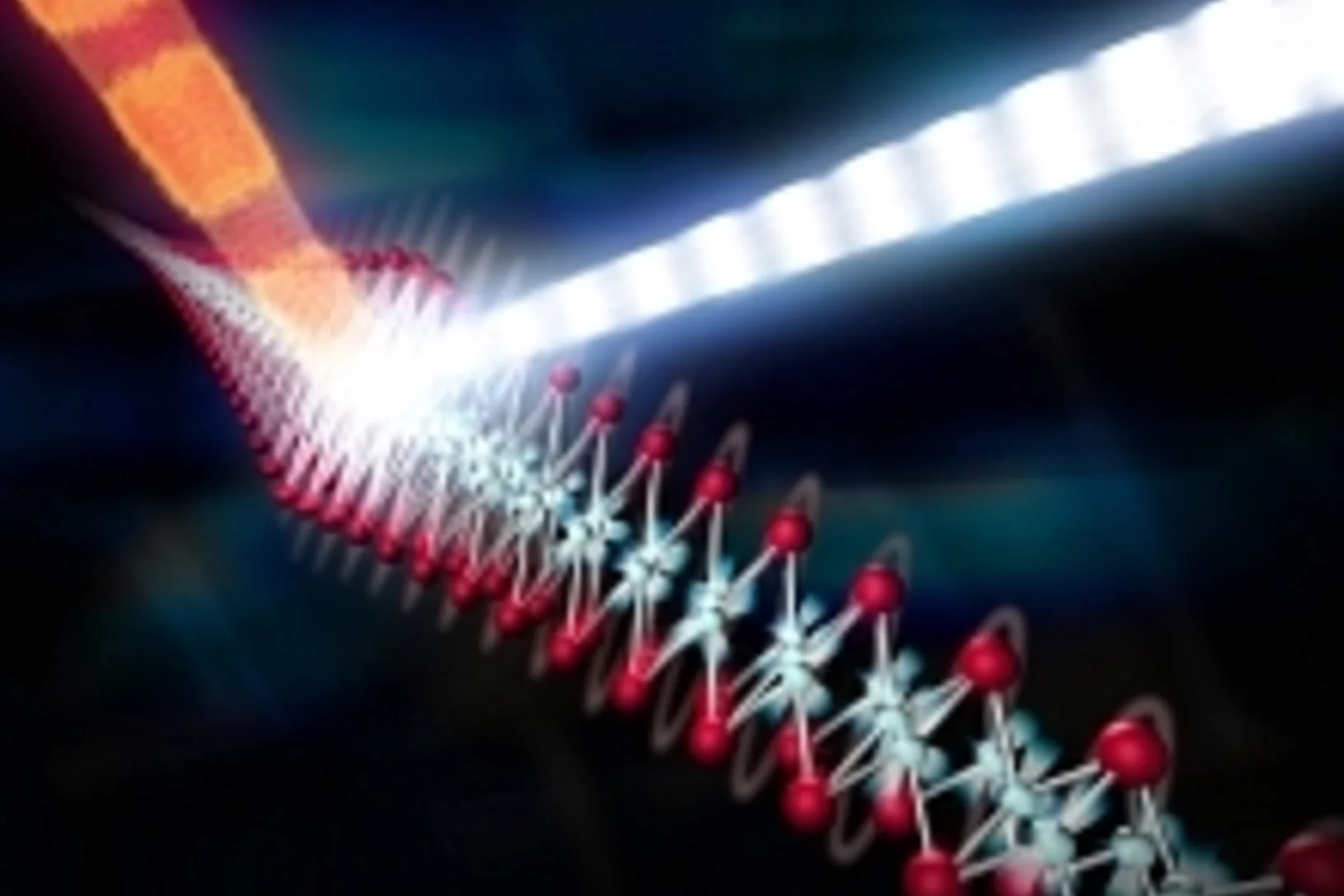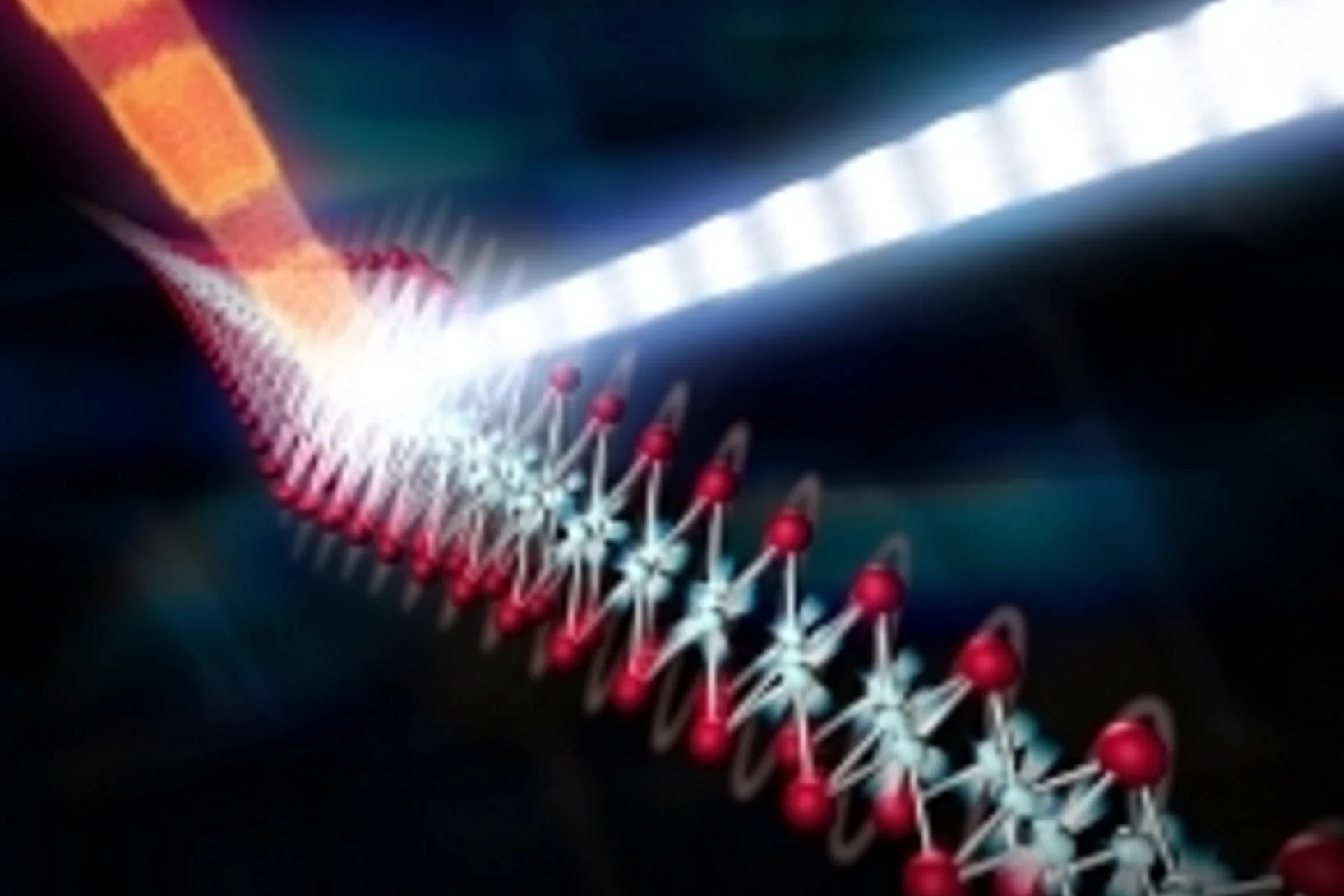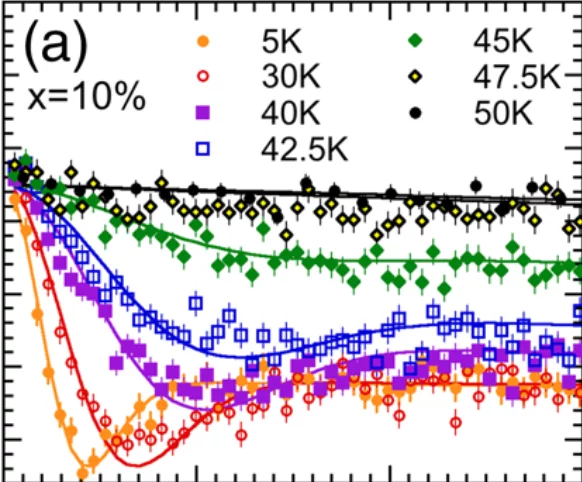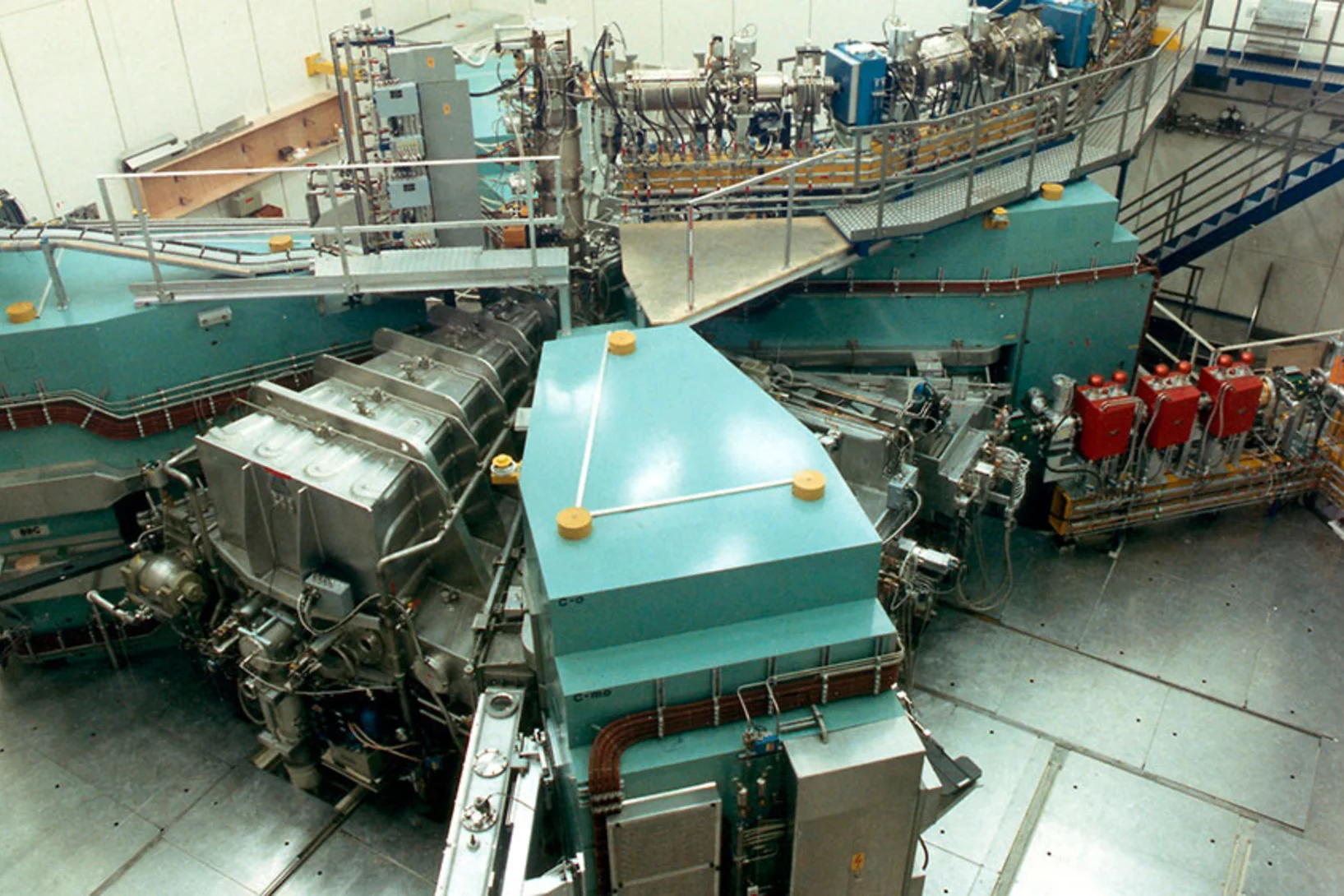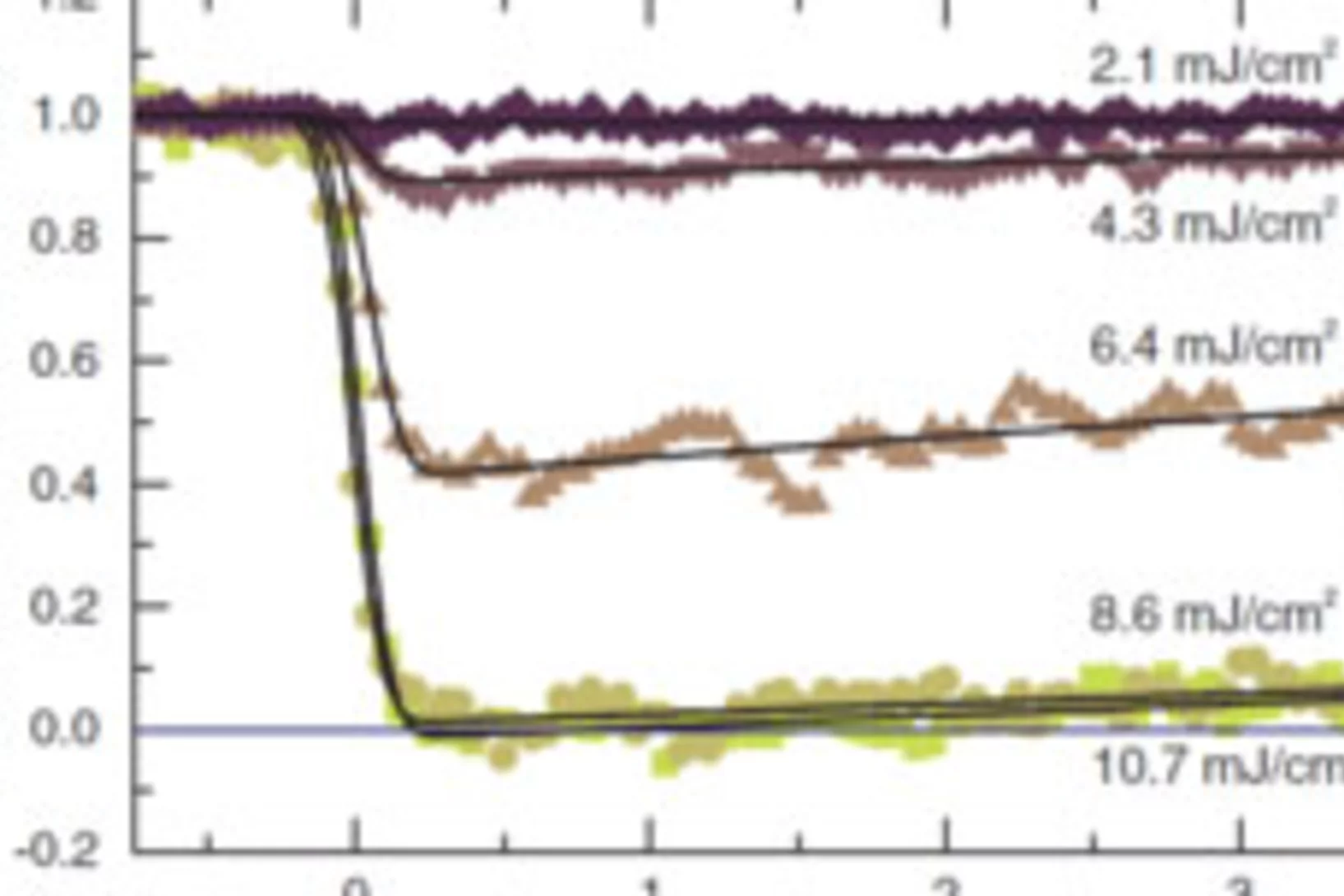Au PSI, plusieurs projets se consacrent à des questions de recherche importantes autour du coronavirus Sars-CoV-2 et des maladies qui en résultent. Nous vous informons sur les activités et les projets, par exemple sur les analyses de tissus pulmonaires, sur la production de protéines et d'anticorps ou sur les idées de nouvelles recherches sur le Covid-19.
Liens utils
High-Tc superconductivity in undoped ThFeAsN
Unlike the widely studied ReFeAsO series, the newly discovered iron-based superconductor ThFeAsN exhibits a remarkably high critical temperature of 30 K, without chemical doping or external pressure. Here we investigate in detail its magnetic and superconducting properties via muon-spin rotation/relaxation and nuclear magnetic resonance techniques and show that ThFeAsN exhibits strong magnetic fluctuations, suppressed below ≈35 K, but no magnetic order.
Coherent superpositions of three states for phosphorous donors in silicon prepared using THz radiation
Superposition of orbital eigenstates is crucial to quantum technology utilizing atoms, such as atomic clocks and quantum computers, and control over the interaction between atoms and their neighbours is an essential ingredient for both gating and readout. A team of researchers including Photon Science division head Gabriel Aeppli has demonstrated THz laser pulse control of Si:P orbitals using multiple orbital state admixtures, observing beat patterns produced by Zeeman splitting. The beats are an observable signature of the ability to control the path of the electron, which implies we can now control the strength and duration of the interaction of the atom with different neighbours. This could simplify surface code networks which require spatially controlled interaction between atoms. The full article can be read in Nature Communications
Moving atoms with enhanced
THz pulses and tracking them with ultrashort x-ray pulses on an XFEL
Controlled motions of atoms using ultrashort electric field pulses allow to manipulated the properties of a material on ultrafast timescales. Here we show how metallic structures can be used to enhance a THz electric field pulse and track the induced atomic motions with ultrashort x-ray pulses emitted by a X-ray free electron laser.
Three-dimensional magnetization structures revealed with X-ray vector nanotomography
In soft ferromagnetic materials, the smoothly varying magnetization leads to the formation of fundamental patterns such as domains, vortices and domain walls. These have been studied extensively in thin films of thicknesses up to around 200 nanometres, in which the magnetization is accessible with current transmission imaging methods that make use of electrons or soft X-rays.
Plongée dans un aimant
Pour la première fois, des chercheurs ont réussi à visualiser les directions de l'aimantation dans un objet magnétique tridimensionnel. Les plus petits détails de leur visualisation mesuraient moins d'un dixième de millième de millimètre. Un type de motif exceptionnel est ressorti dans la structure qu'ils ont fait apparaître: des singularités magnétiques appelées points de Bloch, jusque-là connues uniquement en théorie.
4-spin plaquette singlet state in the Shastry–Sutherland compound SrCu2(BO3)2
The study of interacting spin systems is of fundamental importance for modern condensed-matter physics. On frustrated lattices, magnetic exchange interactions cannot be simultaneously satisfied, and often give rise to competing exotic ground states. The frustrated two-dimensional Shastry–Sutherland lattice realized by SrCu2(BO3)2 is an important test to our understanding of quantum magnetism.
New quantum state observed in a Shastry–Sutherland compound
Scientists from PSI and the École polytechnique fédérale de Lausanne (EPFL) have shown experimentally, for the first time, a quantum phase transition in strontium copper borate, the only material to date that realizes the famous Shastry–Sutherland quantum many-body model.
Un nanomatériau pour stocker l'énergie solaire: efficace et peu coûteux
Si l'on veut pouvoir stocker l'énergie solaire et éolienne sous forme d'hydrogène, il faut disposer d'électrolyseurs efficaces. A l'avenir, ces appareils devraient être meilleur marché et plus efficaces grâce à un nouveau matériau développé par des chercheurs de l'Institut Paul Scherrer PSI et de l'Empa. Les chercheurs ont également montré comment ce matériau pouvait être produit de manière fiable en grandes quantités. Ils ont aussi démontré son rendement dans une cellule électrolytique technique, le composant principal d'un électrolyseur.
Nanomaterial helps store solar energy: efficiently and inexpensively
By combining a scalable cutting-edge synthesis method with time-resolved X-ray absorption spectroscopy measurements, it was possible to capture the dynamic local electronic and geometric structure during realistic operando conditions for highly active OER perovskite nanocatalysts.
Three-Dimensional Electronic Structure of the Type-II Weyl Semimetal WTe2
By combining bulk sensitive soft-x-ray angular-resolved photoemission spectroscopy and first- principles calculations we explored the bulk electron states of WTe2, a candidate type-II Weyl semimetal featuring a large nonsaturating magnetoresistance. Despite the layered geometry suggesting a two-dimensional electronic structure, we directly observe a three-dimensional electronic dispersion.
Understanding the reaction mechanism in lignin catalytic fast pyrolysis
Lignin is a major constituent of plants, and may be used as a precursor for fuels and fine chemicals. Catalytic fast pyrolysis of lignin is one of the most promising approaches. By using vacuum ultraviolet synchrotron radiation and threshold photoelectron spectroscopy we could identify elusive intermediates, which are responsible for the formation of phenol and benzene and could thus tackle this reaction mechanism. Mechanistic understanding could enable targeted improvement of production methods in the future, beyond the currently used "cook-and-look" approach.
Gasoline cars produce more carbonaceous particulate matter than modern filter-equipped diesel cars
In contrast to nitrogen oxides, modern gasoline cars emit much more cancerogenic primary soot (black carbon + primary organic aerosol) and lead to more toxic secondary organic aerosol than modern diesel vehicles.
Scientists get first direct look at how electrons ‘dance’ with vibrating atoms
Research experience from California's X-ray free-electron laser benefits SwissFEL. It's the camera that allows researchers to make extremely rapid processes visible: the X-ray free-electron laser. Currently, however, only three sites worldwide—in the US, Japan and South Korea—have facilities capable of carrying out such measurements. Two current articles in Science and Nature Communications co-authored by researchers now at the Paul Scherrer Institute PSI exemplify the kind of outstanding scientific work that can be carried out at such facilities, enabling new insights into the mechanisms of superconductors and magnetic switching in molecules. The measurements were conducted at the Linac Coherent Light Source (LCLS) free-electron laser in California. Press release PSI / Press release SLAC
Scientists get first direct look at how electrons ‘dance’ with vibrating atoms
Scientists at the SLAC National Accelerator Laboratory and Stanford University - one of the leading authors, Simon Gerber, has in the meantime relocated to PSI - have made the first direct measurements, and by far the most precise ones, of how electrons move in sync with atomic vibrations rippling through an quantum material, in the present study an unconventional superconductor, as if they were “dancing" to the same beat.
Le laser suisse à rayons X SwissFEL profite de l’expérience de la recherche en Californie
Un laser à rayons X à électrons libres permet d'observer certains processus extrêmement rapides. Les premières expériences pilotes au laser suisse à rayons X à électrons libres SwissFEL auront lieu au PSI fin 2017. Deux articles récemment parus dans les revues spécialisées Science et Nature Communications mettent en évidence l'excellence scientifique que de telles installations rendent possible. Les travaux ont été conduits au laser à rayons X à électrons libres LCLS en Californie. Entre-temps, deux des principaux auteurs de ces publications ont intégré le PSI en tant que scientifiques pour contribuer par leur expérience au développement du SwissFEL.
LUC climbs Furka and Grimsel
This year's excursion exposed us to high-alpine wild flowers. A guided tour on alpine plant ecology at the Alpine Research Station Furka had to be canceled in last minute, and was replaced by hiking the Grimsel area, equipped with plant ecology apps.
Rhea Stewart from the University of St Andrews wins an ISMS Young Scientist Award
Rhea Stewart from the University of St Andrews, UK, has been honoured with an ISMS Young Scientist Award
at the 14th International Conference on Muon Spin Rotation Relaxation and Resonance (μSR2017) in Sapporo, Japan,
for her exceptional oral presentation entitled “Anomalous Meissner Screening Probed using Low Energy Muon Spin Spectroscopy”. The Low Energy µSR
experiments have been performed at the LEM facility of the Swiss Muon Source SµS.
Thomas Prokscha new President of ISMS
Thomas Prokscha from the Laboratory for Muon Spin Spectroscopy LMU and Head of the LEM Group has been announced as the new President of the International Society for μSR Spectroscopy (ISMS)
at the 14th International Conference on Muon Spin Rotation Relaxation and Resonance (μSR2017) in Sapporo, Japan.
Essence et produit chimique issus de déchets végétaux
En tant que composant de nombreux végétaux, la lignine existe en grandes quantités et pourrait théoriquement être exploitée comme matière première pour la fabrication de carburants et de produits chimiques. Des chercheurs de l'Institut Paul Scherrer PSI et de l'ETH Zurich ont développé une méthode qui permet d'observer en détail les processus qui se jouent lors de la décomposition catalytique de la lignine. Les connaissances ainsi acquises permettront à l'avenir une amélioration ciblée des procédés de fabrication des produits recherchés.
Nondestructive imaging of atomically thin nanostructures buried in silicon
A team of researchers including Photon Sciences division head Gabriel Aeppli have demonstrated the first non-destructive imaging of atomically thin nanostructures in silicon. Such structures are the building blocks of quantum devices for physics research and are likely to serve as key components of devices for next-generation classical and quantum information processing. Until now, the characteristics of buried dopant nanostructures could only be inferred from destructive techniques and/or the performance of the final electronic device; this severely limits engineering and manufacture of real-world devices based on atomic-scale lithography. In work recently published in Science Advances, the team use scanning microwave microscopy (SMM) to image and electronically characterize three-dimensional phosphorus nanostructures fabricated via scanning tunneling microscope based lithography.
Quantum Griffiths Phase Inside the Ferromagnetic Phase of Ni1-xVx
We study by means of bulk and local probes the d-metal alloy Ni1-xVx close to the quantum critical concentration, xc ≈ 11.6%, where the ferromagnetic transition temperature vanishes. The magnetization-field curve in the ferromagnetic phase takes an anomalous power-law form with a nonuniversal exponent that is strongly x dependent and mirrors the behavior in the paramagnetic phase.
Photonic structure of white beetle wing scales: optimized by evolution
A very thin layer on this beetle’s wings exhibits a complicated structure on the nanoscale that gives them a bright white color. X-ray nanotomography acquired at the Swiss Light Source provides a faithful image of this structure in three dimensions with which scientists can confirm its evolutionary optimization: just enough material for an efficient reflection of white light.
Next Generation Catalysts for Polymer Electrolyte Fuel Cells
Electric vehicles powered by hydrogen polymer electrolyte fuel cells are one option to move towards a low emission transport sector. To decrease the cost of such devices, further research on the various fuel cell components is pursued in academia in industry.
Injecteur 2: un pré-accélérateur de protons
En tant que composants fondamentaux de la matière, les protons sont partie intégrante des choses qui nous entourent. Mais à l’Institut Paul Scherrer PSI, ils abandonnent leur rôle habituel et sont utilisés pour produire d’autres particules, les neutrons et les muons, qui sont ensuite étudiés pour analyser certains matériaux. Pour pouvoir être exploités de la sorte, les protons doivent d’abord être accélérés. Une installation accélératrice en trois étapes joue un rôle important dans ce processus. C’est au milieu de cette installation que se trouve l’accélérateur Injecteur 2.
Cover page of The Journal of Physical Chemistry
The paper titled "Core–Shell Structure of Palladium Hydride Nanoparticles Revealed by Combined X-ray Absorption Spectroscopy and X-ray Diffraction" by Aram L. Bugaev was published in The Journal of Physical Chemistry and made it on the cover of issue 33/2017.
Comparison of ultracold neutron sources for fundamental physics measurements
Ultracold neutrons (UCNs) are key for precision studies of fundamental parameters of the neutron and in searches for new charge-parity-violating processes or exotic interactions beyond the Standard Model of particle physics. The most prominent example is the search for a permanent electric-dipole moment of the neutron (nEDM). We have performed an experimental comparison of the leading UCN sources currently operating.
Nonlinear electron-phonon coupling in doped manganites
We employ time-resolved resonant x-ray diffraction to study the insulator-to-metal transition that is launched via resonant excitation of an infrared-active optical phonon mode in a half doped manganite. We find that the charge order reduces promptly with a highly nonlinear (quartic) dependence on excitation fluence.
Partis d’un garage à la conquête du monde
En 1999, des chercheurs du PSI ont fondé la spin-off SwissNeutronics. Aujourd’hui, l’entreprise compte 15 collaborateurs et vend des composant de haute précision à des centres de recherche du monde entier. Mais elle a conservé son siège dans la petite ville argovienne de Klingnau, à un jet de pierre du PSI.
Carolina Arboleda presented a talk contribution at the Swiss Congress of Radiology (SCR2017) in Bern
Carolina Arboleda, senior PhD student at TOMCAT, presented a talk entitled “Assessment of breast lesion malignancy using phase contrast imaging” at the Swiss Congress of Radiology, which highlighted the potential of X-ray grating-based phase contrast imaging to distinguish between benign and malignant lesions utilizing the absorption to dark-field signal ratio of associated calcifications.
Methods for Generating Highly Magnetically Responsive Lanthanide-Chelating Phospholipid Polymolecular Assemblies
Mixtures of 1,2-dimyristoyl-sn-glycero-3-phosphocholine (DMPC) and its lanthanide ion (Ln3+) chelating phospholipid conjugate, 1,2-dimyristoyl-sn-glycero-3-phospho-ethanolamine-diethylene triaminepentaacetate (DMPE-DTPA), assemble into highly magnetically responsive polymolecular assemblies such as DMPC/DMPE-DTPA/Ln3+ (molar ratio 4:1:1) bicelles.



